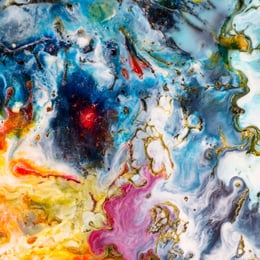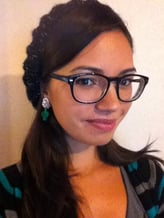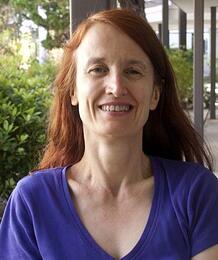A blog post by Melissa Ruisz Nazario based on a webinar presented by Susan Rowland, Ph.D.
“Depth psychology is a psychology of the creative imagination,” says Susan Rowland, Ph.D., Chair of Pacifica’s M.A. program in Engaged Humanities and the Creative Life. She explains that while depth psychology originated and continues to be a powerful form of psychotherapy, its devotion to the creative imagination makes it important beyond the consulting room.
 Pacifica’s M.A. program in Engaged Humanities and the Creative Life, or HMC for short, is unique because it is the only one in the world (that we know of) that uses depth psychology to enable you to explore your own creative resources with the help of both the humanities and creative practice.
Pacifica’s M.A. program in Engaged Humanities and the Creative Life, or HMC for short, is unique because it is the only one in the world (that we know of) that uses depth psychology to enable you to explore your own creative resources with the help of both the humanities and creative practice.
Why does that matter?
As Ira Glass, host of the famous NPR radio show This American Life said in his now-famous “Nobody tells this to creatives” speech, when you’re starting out, the art you produce is usually not as good as your taste; it’s not as good as you want it to be or as good as the work of your creative heroes. What nobody tells you is that you have to keep going, keep producing a lot of bad work until you get to the point where it matches your taste, and you've essentially closed "the taste gap."
The key, then, is to produce a lot of creative work and not give up. After some time, the quality of your creative work will eventually catch up with your impeccable “taste.” But so many quit before that because they’re disheartened when they receive critiques or aren’t getting any positive feedback, and they may not know how to deal with those emotional reactions in a healthy way.
 One thing the M.A. Program in Engaged Humanities and the Creative Life offers is more creative strategies to help you through those challenging phases of developing your creative voice. In some M.F.A. program workshops, students are told that they must "develop a thick skin" as their peers critique their work. This creates a more competitive atmosphere, Dr. Rowland observes, which contrasts with the Engaged Humanities program, which is more nurturing as you develop your creative voice. The program teaches you how to find your own resilience and strength when you’re perhaps having a dark night of the soul, something to which creatives are especially prone. Additionally, instead of competition, it encourages collaboration through group projects with fellow students, such as writing a dramatic scene together.
One thing the M.A. Program in Engaged Humanities and the Creative Life offers is more creative strategies to help you through those challenging phases of developing your creative voice. In some M.F.A. program workshops, students are told that they must "develop a thick skin" as their peers critique their work. This creates a more competitive atmosphere, Dr. Rowland observes, which contrasts with the Engaged Humanities program, which is more nurturing as you develop your creative voice. The program teaches you how to find your own resilience and strength when you’re perhaps having a dark night of the soul, something to which creatives are especially prone. Additionally, instead of competition, it encourages collaboration through group projects with fellow students, such as writing a dramatic scene together.
Dr. Rowland makes the point that the Engaged Humanities program isn’t competing with M.F.A. programs; it is doing something entirely different. In her words, because the M.A. program incorporates depth psychology, it helps in “creating creative people who are in it for the long haul and who have more psychological strategies and resiliencies that you can’t get from an M.F.A. program.”
There are other differences between a traditional M.F.A. program and the Engaged Humanities M.A. program. In an M.F.A., you'd likely choose a concentration in a particular medium or specialty, such as sculpture in an art M.F.A., or poetry in a creative writing M.F.A. You'd develop technical skills in that specialty and learn about how to compete in that market. In contrast, the Engaged Humanities M.A. program does not focus on developing technical skills in one medium, but instead utilizes depth psychology and developing a creative practice to help develop a part of yourself that you could then use or "take with you" in whatever medium or specialty you explored.
Additionally, many students in the Engaged Humanities M.A. program who had a specific creative project in mind have been able to work on and develop parts of that project through their graduate coursework. So, if you have an idea for a manuscript or other large creative project, you will have the flexibility to structure and work on that project as part of your course assignments.
 Three Pillars
Three Pillars
The M.A. Program in Engaged Humanities and the Creative Life is structured with three pillars, and all are presented in the curriculum equally.
1. Depth Psychology
As with all of Pacifica’s degree programs, the curriculum expands upon the work of the innovators and scholars who created and developed the field of depth psychology, including C.G. Jung and Joseph Campbell, as well as James Hillman, who furthered developed Jung’s ideas into the field of archetypal psychology. Understanding the archetypes within the unconscious and how they are activated in our daily lives can enable you to tap into stores of deep creativity.
“We’re looking at the way in which the kind of deep creativity is constellated in the archetypes and that these affect who we are all the time, but they also can be accessed in a way that develops our creativity,” says Dr. Rowland.
2. Humanities
What does it mean to be human? That is what the field of humanities explores. Comprised of a group of scholarly disciplines such as philosophy, the arts, history, mythology, and the study of religion, the humanities were understood to be knowledge of the “inner world” of humans, while science was knowledge of the outer world.
Combining the study of depth psychology and the humanities in this M.A. program, Dr. Rowland observes, is much more powerful than doing or studying either on their own. “The depth psychology makes the humanities more alive, more animate, more engaged, hence the term engaged humanities.” The program provides a dynamic way of studying the humanities that may not be available in other graduate programs.
3. Creative Practice
The M.A. in Engaged Humanities is also different from all of the other graduate programs at Pacifica Graduate Institute because it incorporates various creative practices in the curriculum as another means to study and explore both depth psychology and the humanities. Students might do collage work, write poetry collectively, develop scenes or plays together, and otherwise nurture a creative practice that is sometimes collaborative with other students in their cohort. At the end of each course, students can choose to either do a longer scholarly paper, or do a creative project with a very short scholarly paper to go with it.
 Three types of students
Three types of students
That said, do students of the program need to be experienced artists with established creative practices in order to join the program? No, not necessarily. All of the students who enroll in the M.A. Program in Engaged Humanities and the Creative Life fall into one of three categories, Dr. Rowland says.
1. Experienced artist
There are certainly many established creatives and artists who enroll in the program and are searching for ways to deepen their art or rediscover why they entered the creative field in the first place. Perhaps they’ve been feeling stuck or “burnt out,” or, conversely, they may have experienced success in their artistic careers, but it’s become problematic because they’ve lost touch with who they are.
2. Looking for creativity
Another group of students who enroll in the master’s program are those who haven’t done much creative work and are longing to develop a creative practice. On one hand, they could be in their 20s, trying to find their place in their world. Or, they could be those in their 50s, 60s, or even 70s who are coming to the end of one career path and who may be looking to transition into something more creative.
3. Want to develop skills to change orientation
The third type of students in the program are those who want something more dynamic than perhaps some other humanities graduate degrees, and who wish to do something additional in the world by bringing together depth psychology and creative work. That additional something might be activism or public art that enables them to engage with other people deeply. It could perhaps be teachers who wish to learn how to develop psychological resilience to stress on the job.
Finding your voice
The exciting thing is that while you don’t have to have an established creative practice or a well-developed creative voice when you enter the program, all students without exception find their own voice by the end of the program, says Dr. Rowland. The program gives them the space and the tools to discover what matters most to them, that then informs their creative voice.
Are you ready to develop your creative voice, while learning how to access your deep stores of creativity through studying the humanities and depth psychology? The M.A. in Engaged Humanities and the Creative Life is now accepting applications for Spring 2019. Learn more about this dynamic, low-residency program that will enable you to continue working while earning your degree here.
 Melissa
Melissa
 Dr. Susan Rowland earned her Ph.D. from The University of New Castle and her master’s degree is from The University of London and Oxford University. She was the first chair of the International Association of Jungian studies. She is the author of many studies of Jung, literary theory and gender, including C. G. Jung and Literary Theory, Jung: A Feminist Revision, Jung as a Writer, and also edited Psyche and the Arts. Another recent book is C. G. Jung and the Humanities, showing how Jung’s work is a response to the creative, psychological, spiritual, philosophical, and ecological crises of our age. Her 2012 book, The Ecocritical Psyche: Literature, Evolutionary Complexity and Jung, was published by Routledge, and it shows how the Jungian symbol is a portal to nature. Dr. Rowland’s work is not so much about Jung as an attempt to develop his special insights into myth, technology, the feminine, nature, and the numinous for today’s wounded world.
Dr. Susan Rowland earned her Ph.D. from The University of New Castle and her master’s degree is from The University of London and Oxford University. She was the first chair of the International Association of Jungian studies. She is the author of many studies of Jung, literary theory and gender, including C. G. Jung and Literary Theory, Jung: A Feminist Revision, Jung as a Writer, and also edited Psyche and the Arts. Another recent book is C. G. Jung and the Humanities, showing how Jung’s work is a response to the creative, psychological, spiritual, philosophical, and ecological crises of our age. Her 2012 book, The Ecocritical Psyche: Literature, Evolutionary Complexity and Jung, was published by Routledge, and it shows how the Jungian symbol is a portal to nature. Dr. Rowland’s work is not so much about Jung as an attempt to develop his special insights into myth, technology, the feminine, nature, and the numinous for today’s wounded world.



